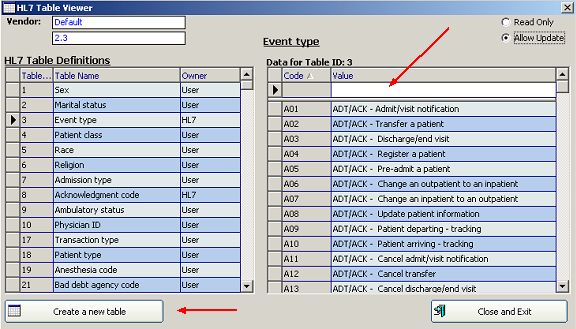In the world of HL7 certain data fields, or even certain components of data fields, are related to an HL7 Table. The tables fall into two categories (based on ownership), they are 'User' and 'HL7'. Officially, all tables with an 'Owner' of HL7 should contain completely standard entries, while those defined as 'User' can contain whatever values the user's wish and perhaps are defined in a particular vendor's HL7 implementation guide.
Example: Table 1 (Patient Sex) for vendor 'XXX' may define Code 'M' as having a value of 'Male' and Code 'F' having a value of 'Female', while vendor 'YYY' may define Code 'X01' as having a value of 'Male', while Code 'Y01' has a value of female. So, in HL7 files sent to or received from vendor 'YYY' in the PID segment, in the Patient Sex element, you would be expected to either enter (if sending) or interpret (if receiving) 'X01' as Male and 'Y01' as Female.
EasyHL7 provides these tables as a guideline and reference only. There are no data validations done against these tables when loading HL7 files, that remains for you to do within your own implementation.
Navigation:
In the window, when you select a table from the list on the left, all of the elements for that table are displayed in the list on the right.
In edit mode (as shown below) users can click 'Create a new table' to add tables. In the table data list you can edit the Code and Value fields in place. To add new elements the 'New' row at the top of the list allows you to enter a new code and value. Pressing the 'Enter' key on the keyboard adds the new item to the list. To delete either an entire table or a single data element highlight the item by clicking the leftmost column in the appropriate list and press the 'Del' key on the keyboard.

API Notes: See ShowSegments(), ShowElements(), ShowElementProperties(), ShowTables(), ShowDataTypes(), ShowReports(), ShowProfiles(), ShowConfiguration(), ShowAnnotations(), OpenFileManager(), ShowVendors(), ShowRegistration()